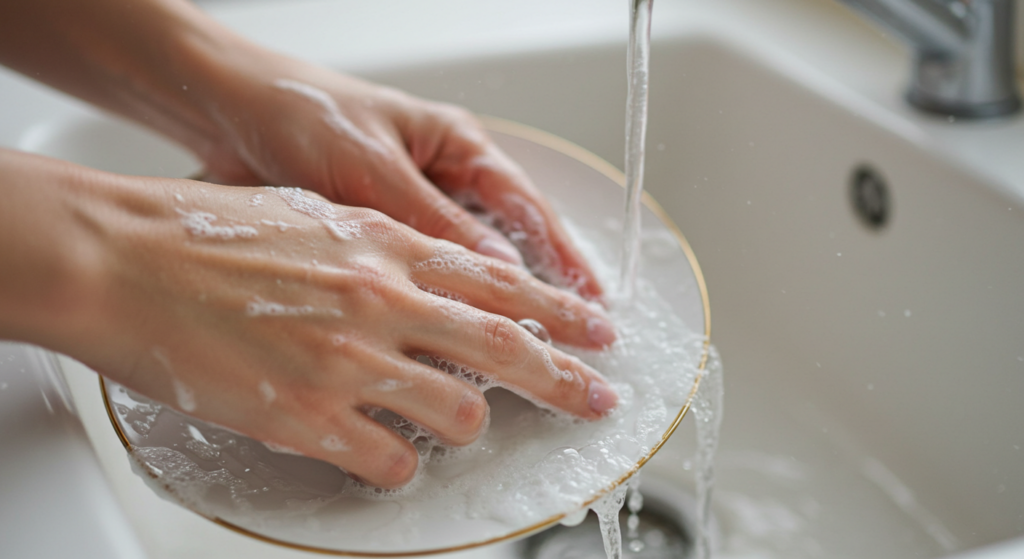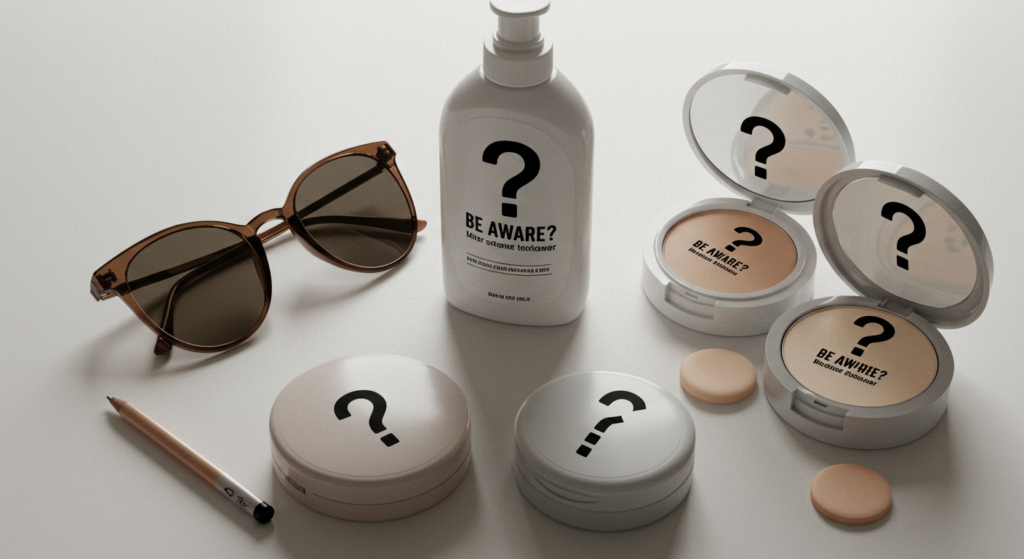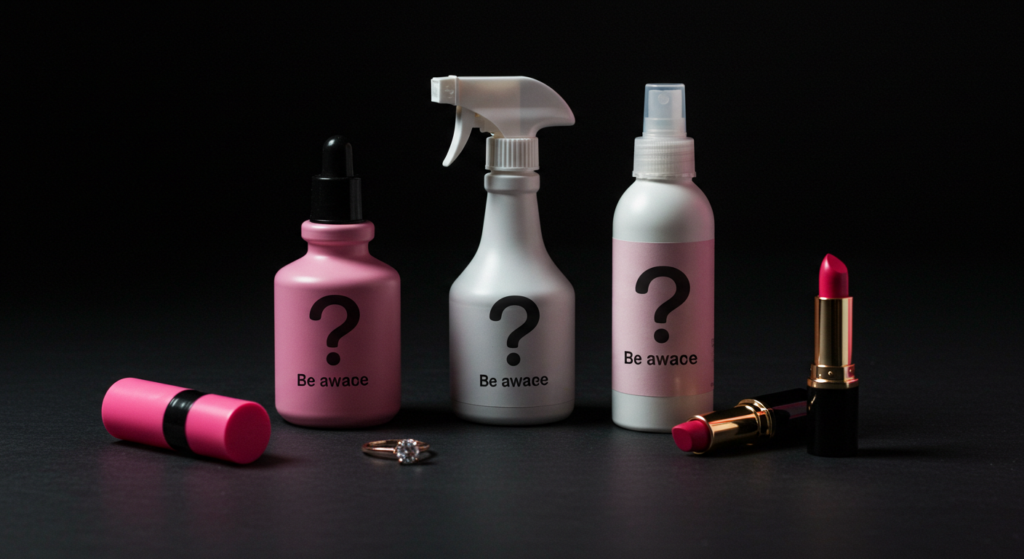Contact dermatitis, also known as contact eczema, is a common inflammatory skin condition triggered by direct contact with irritating substances or allergens. This condition manifests as itchy, red, and inflamed skin, sometimes with blistering or weeping. Understanding the culprits behind contact dermatitis – both irritants and allergens – is crucial for effective management and prevention. This article will delve into the common substances that cause contact dermatitis, highlighting the differences between irritant and allergic reactions and offering strategies for managing and preventing this prevalent skin condition.

Understanding Contact Dermatitis
Contact dermatitis is characterized by an inflammatory response of the skin’s immune system to external substances. This response can be immediate or delayed, depending on the type of contactant. Irritant contact dermatitis arises from direct damage to the skin’s protective barrier by harsh chemicals or physical factors. This damage triggers an inflammatory reaction, leading to redness, itching, and dryness. The severity depends on the concentration and duration of exposure to the irritant.
Allergic contact dermatitis, on the other hand, involves a delayed hypersensitivity reaction mediated by the immune system. Prior sensitization to an allergen is necessary; upon subsequent exposure, the immune system recognizes the allergen and mounts an inflammatory response. This reaction typically occurs 12-48 hours after exposure and can be more severe than irritant contact dermatitis. Symptoms can include intense itching, blistering, and widespread inflammation.
The diagnosis of contact dermatitis often involves a thorough history taking, including details of recent exposures to potential irritants or allergens. A physical examination is crucial to assess the extent and severity of the skin lesions. Patch testing, a specialized procedure involving applying small amounts of potential allergens to the skin, can help identify specific allergens responsible for allergic contact dermatitis. This test is essential for personalized management and prevention strategies.
Accurate diagnosis is paramount for effective treatment. Differentiating between irritant and allergic contact dermatitis guides treatment choices. For example, avoiding the irritant is crucial for irritant contact dermatitis, whereas allergen avoidance and potential immunotherapy are key for allergic contact dermatitis. Ignoring the underlying cause can lead to chronic inflammation and persistent symptoms.

Common Irritant Contactants
Many everyday substances can trigger irritant contact dermatitis. Detergents, soaps, and cleaning agents frequently contain harsh chemicals that strip the skin of its natural oils, leading to dryness, irritation, and inflammation. These products often contain alkaline substances and fragrances that further exacerbate the skin’s sensitivity. Prolonged exposure to water, especially hot water, can also weaken the skin’s barrier and contribute to irritant contact dermatitis.
Certain solvents and industrial chemicals pose a significant risk of irritant contact dermatitis, particularly in occupational settings. These substances can directly damage the skin’s protective barrier, leading to severe inflammation and even chemical burns. Construction workers, healthcare professionals, and factory workers are among those at increased risk of occupational irritant contact dermatitis. Proper protective equipment and adherence to safety protocols are essential in these environments.
Cosmetics and personal care products can also contain irritating ingredients. Fragrances, preservatives, and certain dyes are common culprits. Individuals with sensitive skin should carefully examine product labels and opt for fragrance-free and hypoallergenic formulations. Patch testing can be helpful in identifying specific ingredients that trigger reactions.
Friction and pressure from clothing, jewelry, or other objects can also cause irritant contact dermatitis. Rough fabrics, tight-fitting clothing, and prolonged pressure can disrupt the skin’s barrier and lead to inflammation. Choosing soft, breathable fabrics and avoiding tight-fitting garments can minimize the risk of irritant contact dermatitis from friction and pressure.

Identifying Allergic Contactants
Nickel is a common allergen found in many everyday objects, including jewelry, buttons, zippers, and certain types of metal tools. Exposure to nickel can lead to allergic contact dermatitis, manifesting as itchy, red rashes in the areas of contact. Avoiding nickel-containing items is crucial for individuals with nickel allergy.
Certain plants, particularly poison ivy, poison oak, and poison sumac, contain urushiol, a potent allergen that causes allergic contact dermatitis. Contact with these plants can result in a characteristic itchy, blistering rash. Washing the affected area thoroughly with soap and water immediately after exposure can help prevent the spread of urushiol.
Cosmetics and personal care products can also contain allergens that trigger allergic contact dermatitis. Fragrances, preservatives, and certain dyes are common culprits. Latex, found in gloves and other medical supplies, is another significant allergen. Healthcare workers and individuals with latex allergy should take precautions to minimize exposure.
Identifying specific allergens requires careful history taking and often patch testing. A dermatologist can perform patch testing to identify the specific allergens causing the reaction. This information is crucial for developing an effective management plan, which includes avoiding contact with the identified allergens.

Managing and Preventing Contact Dermatitis
Management of contact dermatitis focuses on reducing inflammation and relieving symptoms. Topical corticosteroids are often prescribed to reduce inflammation and itching. These medications are available in various strengths, and the appropriate strength should be determined by a healthcare professional based on the severity of the condition. Moisturizers are also important to restore the skin’s protective barrier and prevent dryness.
Avoiding contact with the offending irritant or allergen is the cornerstone of contact dermatitis management. This may involve changing detergents, avoiding certain cosmetics, or modifying work practices. For occupational contact dermatitis, protective clothing and equipment are crucial. Lifestyle modifications can also play a significant role, such as wearing loose-fitting clothing made of breathable fabrics.
In severe cases, oral corticosteroids or other systemic medications may be necessary to control inflammation. Phototherapy, using ultraviolet light to treat the affected skin, may also be considered. For individuals with chronic or recurrent contact dermatitis, regular follow-up with a dermatologist is essential to monitor the condition and adjust treatment as needed.
Preventing contact dermatitis involves identifying and avoiding potential irritants and allergens. Careful selection of personal care products, using protective clothing in appropriate settings, and regular skin moisturizing can significantly reduce the risk. Maintaining good skin hygiene, including gentle cleansing and avoiding harsh soaps, is also important. Early recognition of symptoms and prompt treatment can prevent the condition from becoming chronic.

Contact dermatitis is a common and often manageable skin condition. By understanding the causes, identifying the specific irritants or allergens involved, and implementing appropriate management and prevention strategies, individuals can significantly improve their quality of life and minimize the impact of this condition. Regular consultation with a dermatologist is crucial for accurate diagnosis, personalized treatment, and effective long-term management.
Discover the expertise of Dr. Ebru Okyay, your trusted dermatologist in Antalya. Whether you’re looking to address medical skin concerns or enhance your natural beauty with cosmetic treatments, Dr. Okyay is here to help. With personalized care and advanced techniques, achieving your skin goals has never been easier.
